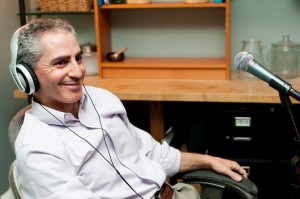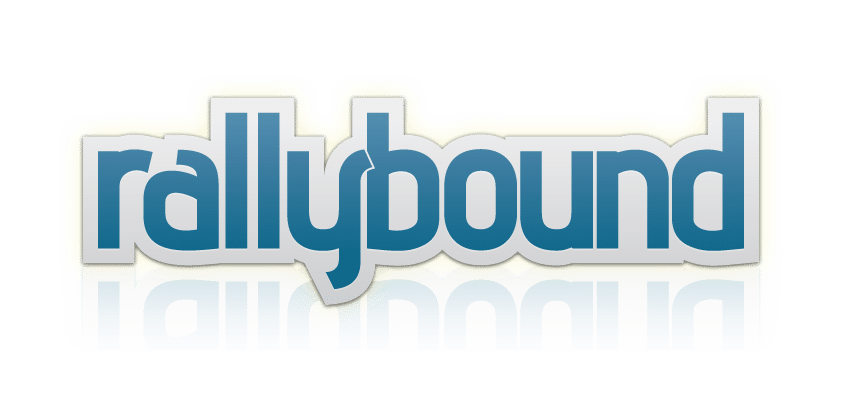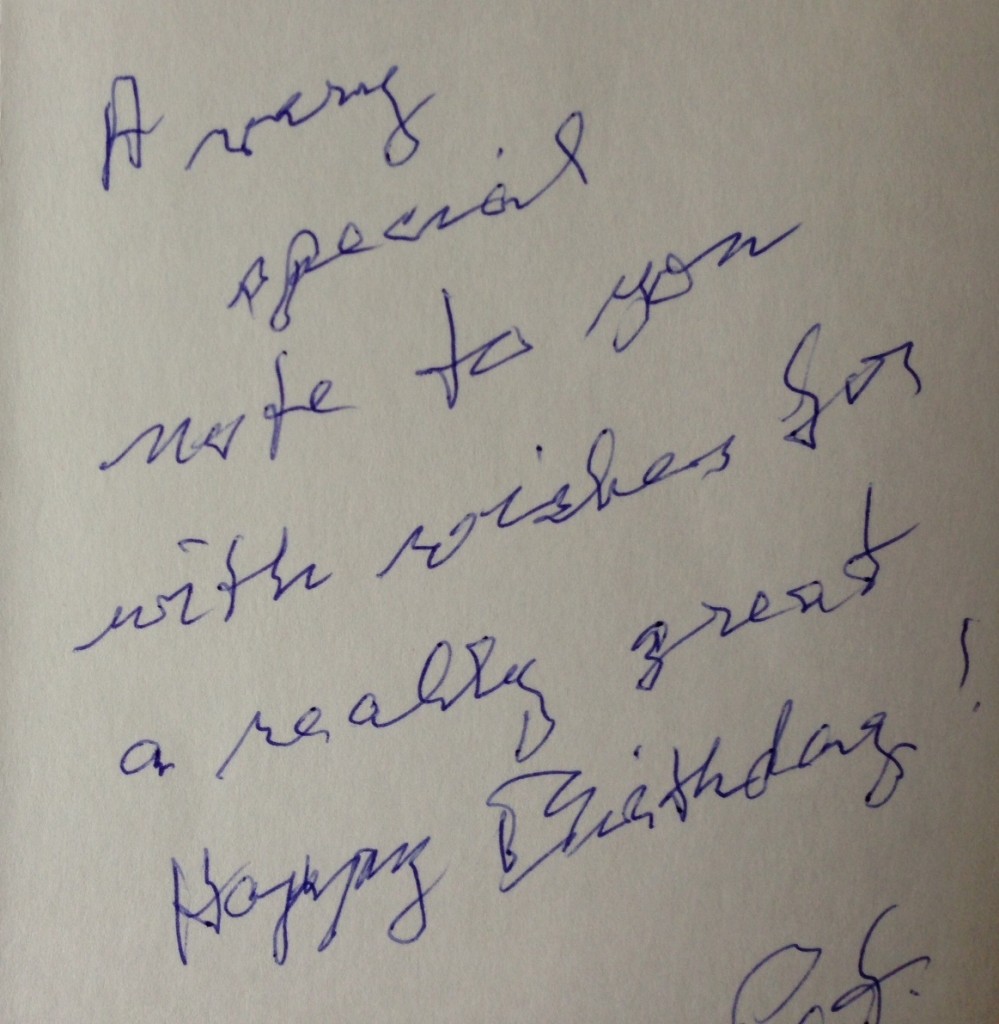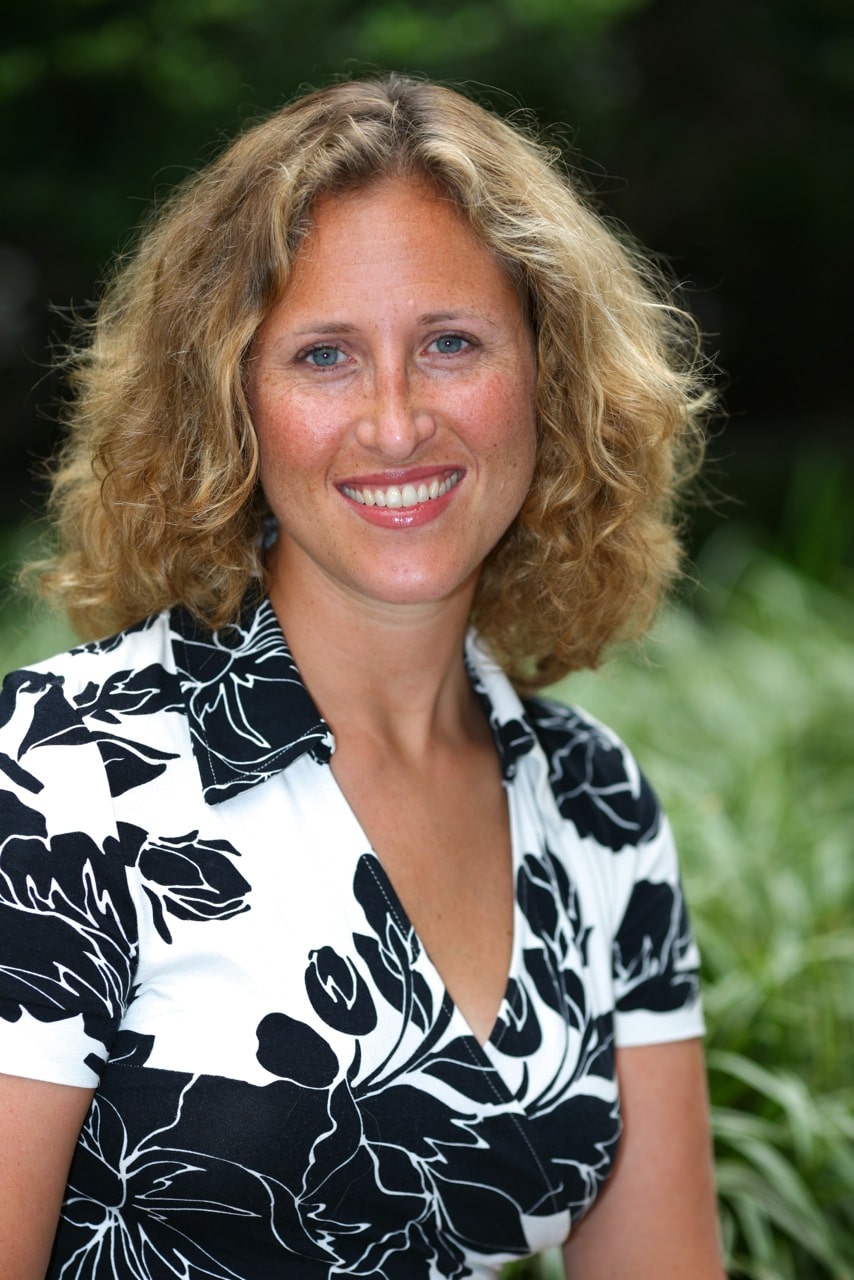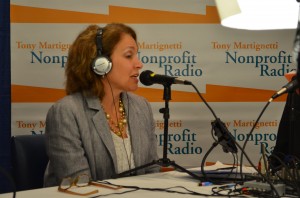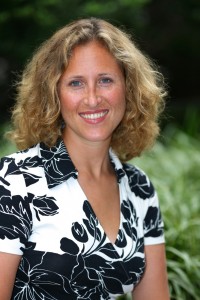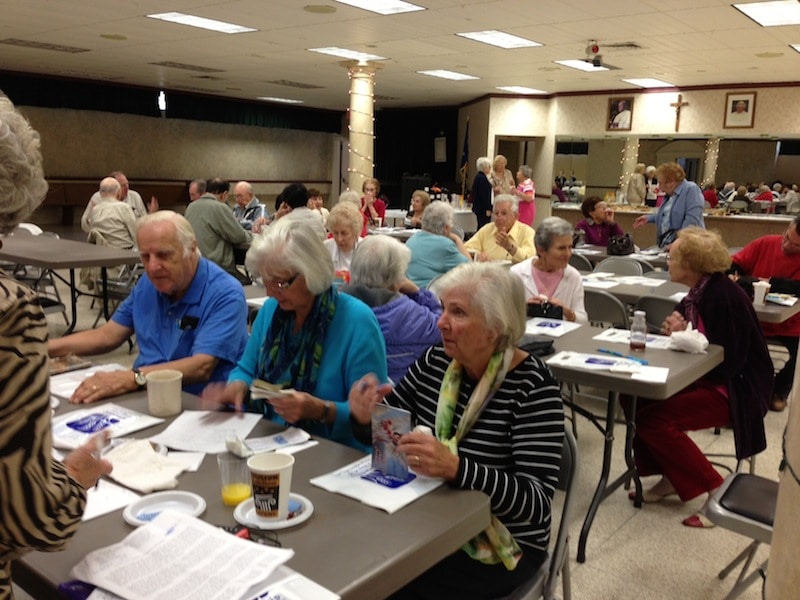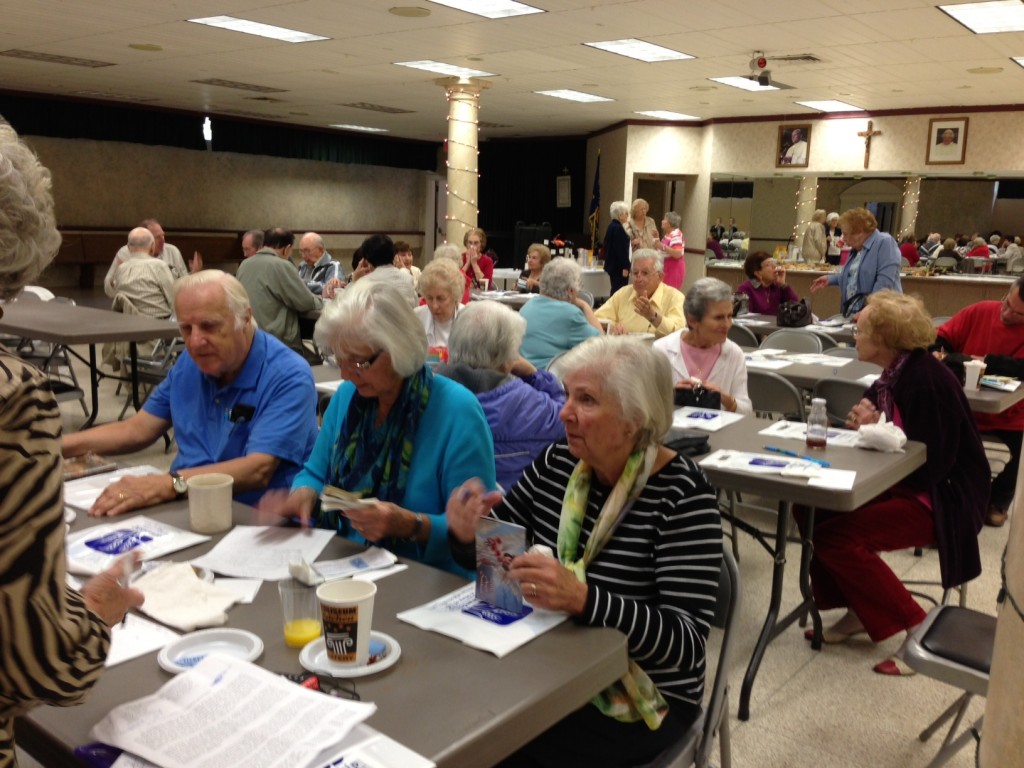Big Nonprofit Ideas for the Other 95%
Sponsored by RallyBound peer-to-peer fundraising for runs, walks and rides.
- On Fridays at 1pm Eastern: Talking Alternative Radio
- Archive: Listen to the October 18, 2013 archived podcast
My Guests:
Rachel Hutchisson and Anastasia Dellaccio: #GivingTuesday
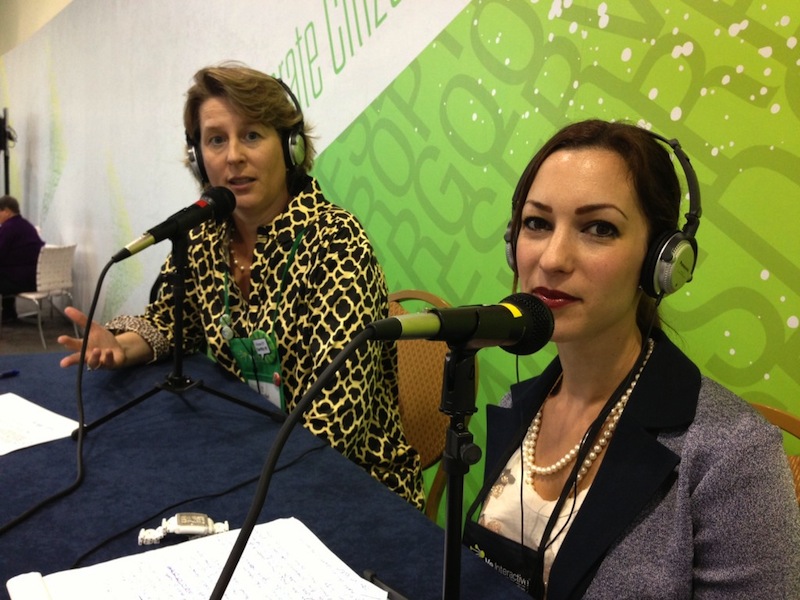
Rachel Hutchisson with Blackbaud and Anastasia Dellaccio from the United Nations Foundation share the history of GivingTuesday and how easy it is for your nonprofit to get involved with this international movement on December 3, 2013.
Amy Sample Ward: New Low Facebook Reach?
 Has your Facebook page reach plummeted? Amy Sample Ward, our social media contributor and CEO of NTEN, the Nonprofit Technology Network, will explain what the heck is going on, and what you can do about it. Plus, her 60-Second Style Stop, of course.
Has your Facebook page reach plummeted? Amy Sample Ward, our social media contributor and CEO of NTEN, the Nonprofit Technology Network, will explain what the heck is going on, and what you can do about it. Plus, her 60-Second Style Stop, of course.
Top Trends. Sound Advice. Lively Conversation.
You’re on the air and on target as I delve into the big issues facing your nonprofit—and your career.
If you have big dreams but an average budget, tune in to Tony Martignetti Nonprofit Radio.
I interview the best in the business on every topic from board relations, fundraising, social media and compliance, to technology, accounting, volunteer management, finance, marketing and beyond. Always with you in mind.
When and where: On Fridays at 1PM Eastern: Talking Alternative Radio
You can also subscribe on iTunes to get the podcast automatically.
View Full TranscriptProcessed on: 2018-11-11T23:05:48.762Z
S3 bucket containing transcription results: transcript.results
Link to bucket: s3.console.aws.amazon.com/s3/buckets/transcript.results
Path to JSON: 2013…10…164_tony_martignetti_nonprofit_radio_20131018.mp3.856562283.json
Path to text: transcripts/2013/10/164_tony_martignetti_nonprofit_radio_20131018.txt
Hello and welcome to tony martignetti non-profit radio big non-profit ideas for the other ninety five percent you know me, i’m your aptly named host it’s friday, october eighteenth, twenty thirteen and very good to be back in the studio after a hiatus last week. Oh, i hope you were with me last week. I’d suffer ortho static hypertension if i were forced to endure the knowledge that you had missed, i had a great interview, but i didn’t get the job, suzanne felder, a consultant in outplacement at lee hecht harrison, said there’s more to getting a job than having a good resume and interview, we talked about research panel interviews, dodging the salary question and what to do in the last thirty minutes before your interview and storytelling. Rochelle shoretz, founder and executive director of shark share it shared ideas on identifying and supporting storytellers and why it’s all worth your time this week e-giving tuesday, rachel hutchisson with blackbaud and anastasia dellaccio from the united nations foundation share the history of giving tuesday and how easy it is for your non-profit to get involved with this international movement on december third of this year, and that was recorded at be become just late last month. Also new low facebook reach has your facebook page reach plummeted? Amy sample ward, our social media contributor and ceo of and ten the non-profit technology network, we’ll explain what the heck is going on with facebook page reach and what you can do about it, plus her sixty seconds style stop. Of course, between the guests on tony’s, take two reply cards that your planned e-giving donors can actually reply on. We’re sponsored by rally bound software for runs, walks and rides. They are a partner for giving tuesday, and they’re offering something valuable. I’ll explain that later in the show, i welcome them to sponsorship. Now we have the interview on giving tuesday recorded it bb con here is that welcome to tony martignetti non-profit radio coverage of bb khan twenty thirteen, where outside washington dc and national harbor, maryland at the gaylord convention center with me are rachel hutchisson and anastasia dellaccio we’re talking today about giving tuesday. Rachel is director of corporate citizenship and philanthropy for blackbaud and anesthesia is outreach and special initiatives officer for the united nations foundation. Ladies, welcome to the show, we’re having our pleasure to have you, rachel let’s, start with you. What is giving tuesday e-giving tuesday is a wonderful movement. That’s really designed to get everyone individuals, organizations and businesses involved in giving back anastacia can give you a lot better detail, but the whole idea is that if we can have black friday and cyber monday, two days committed to shopping, then we need to have giving tuesday, which is the opening day of the giving season committed to giving back. Ok, when is that? It is december third, which for people in the u s is the tuesday immediately following thanksgiving. Okay, how did e-giving tuesday come about? Where is it from? On stage? You want to be sure? So you know what rachel said earlier? You know, you have these two days after thanksgiving that are really about shopping and commerce and buying presents for people, which is great it’s great it’s, great for the economy, but we wanted teo and matthew bishop and henry tim’s of the the ninety second street. Why i kind of came up with this idea that it’s important to bring personal philanthropy and philanthropy and giving and volunteerism back into the holiday. Season back into the holiday spirit. You know, a lot of a lot of people do a lot of there there giving it the end of the year on dh it’s kind of thought about is an afterthought. So why not preempt that and use it as a way to open up the holiday season by giving back a little bit as well. So the idea this this whole idea came about and you know it, it’s just a way, teo, to really be able to bring people together on one day which this year’s december third mark your calendars. It was a way to unite people all around the world about philanthropy and giving back, and you don’t have to just donate. You can donate, which is great for your favorite cause. You can you can volunteer. You can work at a food bank. You could do a clothing drive or you, khun, go on to some websites of a lot of our great partners like unicef and purchase wonderful gifts that also give back at the same time. Okay, there’s a way for non-profits to take part in giving tuesday to promote it to their constituents. What can? They do? Yeah, absolutely. I mean, giving tuesday is really just there is a platform for good essentially it’s a megaphone for for the great work that people are already planning. So as a non-profit you, khun join and you could just plan to do some sort of online fund raiser, you know, offline fundraiser, whatever it is that you want to do to be able to highlight, you know, you’re giving programming that you probably already have planned around the holidays anyway. You can also be a corporation or a small business or an individual, and just plan something that would benefit a five a one c three or you could just volunteering your time and and and host of fund-raising yourself or do a book driver, you know, work with your kids to clean up a local park. It’s it’s kind of for anyone it’s it’s an absolute no barrier entry there’s no cost for entry. The only benefit is is that it’s a great way to be able to highlight your work. Rachel, how did well, how long have we had? E-giving tuesday’s e-giving tuesday. Launched last year. If this is the second year on blackbaud is very excited to be both a founding partner working to convey and help share the love, help everyone get involved in the movement and then also to do some very specific things ourselves. The whole goal for us is that we believe in philanthropy, we believe in giving, and we would love to see that universe of people who are giving and serving be bigger and giving tuesday is away, particularly through social media, to reach people who are maybe not engaging in the world of philanthropy. It amplifies it so it the goal is to try to reach deeper into the audience. Okay, why don’t we talk a little about what blackbaud is doing as a founding member of e-giving tuesday? Sure, so we have a lot of things planned. It blackbaud forgiving tuesday, and our philosophy comes from trying to reach all the different audiences that we work with, so that will be important for our listeners, some of whom are blackbaud clients, customers, some or not, but our audience is small and midsize non-profits right, so it’s really for anybody, whether you’re thinking about you as an individual person, whether you’re thinking about you working within your non-profit but first and foremost, we want to share the news about e-giving tuesday with a non-profit market just so they’re aware of it and they have an opportunity to engage, we’re working specifically to share the news with our customer base here it bb khan and also very specifically we’re hosting a three part webinar siri’s the tuesdays leading up to giving tuesday in november and it’s about year and fund-raising because people often ask, well, what’s giving tuesday it’s just a day, but what it is it’s an opportunity to really amplify what you’re doing and to weave it into the very, very important year and fund-raising plans that you have, so we have matthew bishop from the economist henry tim’s from the ninety second street y and adam hers from gentleman joining us on those shows and then different organizations like the san diego zoo talking about this is what we do for year on fund-raising and this is how we use giving tuesday to help with that because it’s, not something you really just duitz completely in a silo, so we’re doing it this siri’s to help people understand help non-profits understand what they may do. Another audience that we really care about is our employees so blackbaud has twenty, seven hundred employees, eighty one percent of them volunteer their really engaged and so we’re looking to them and saying us people have an opportunity to say this is what i’m passionate about take a picture of it, put it on instagram, we’re going to scroll it on our website, you know, just tell us how you choose personally to give back so those are a couple small to midsize businesses, another were a midsize business, so we do. I run corporate citizenship in philanthropy, and we do a lot of things to give back to the world, and one of the things i’ve observed is that businesses really do want to engage in their community, and often they don’t really know how to strategically think about it. So on giving tuesday this year, we’re launching business doing good dot com, and it is a resource for small to mid size businesses tto learn about how they kind of build that give back function into their business. Where will we find the weapon? Our siri’s that that’s the three tuesdays leading up to december third if you look a tte blackbaud website www dot blackbaud dot com forward slash e-giving tuesday there’s a landing page on the site there’s also well, cards, baby con but him and it will allow you immediately to register for the three. Okay? And of course they’re free, right? Absolutely free it’s thought leadership, it’s it’s educational content just to help anybody who is interested in a station you have ah, let’s, talk a little about some ideas that non-profits might used t engage. I mean, i know you said wide open really no barriers, but let’s, get into some specifics you know organizations are doing or that you think could be really useful. Sure, i’d love to highlight some case studies of some of our great partners. And i just also want to know at this point where we’re at about twenty, seven hundred partners, which is where we were when we finished last year. So quite a big feet, people are, you know, jumping on the bandwagon and that’s great. But i think part of what blackbaud is doing, which is really interesting is that a lot of our partners came to us after and i said, how can i maximize my e-giving strategy this year. How can i stand out from the crowd? And and so, you know, there’s, a lot of great organizations, the u s hockey foundation is going to be drawing attention to fund-raising of fans by creating an interactive map. And different states are going to turn colors red, white and blue according to how much money has been raised which is a really interactive way to engage your donor base and, you know, engaged more of a donor base who want to see thes interactive and the state’s changed colors. So about that that’s that’s kind of it also makes it a competition. Absolutely. You england states so i could see maybe competing against each other. The the four corner states out in the west might be competing. Okay, friendly state competition. Okay, us airways. They’re going to be activating their miles for hope programme making sort of a mile matching campaign. Discover is going, teo, say a lot more about the mile matching campaign. Yeah, so as people fly there, going to be donating money back-up teo their cause okay, discover is going to be doing a two percent match program of donations and they’re also doing an employee activation campaign, which is great because i think when you’re thinking about corporate, you can give back, you know, to the causes that you’re partnering with, but it’s also great to be thinking about how can you activate your own employee base last year for the u n foundation? You know, beyond having our various campaigns girl up, shot at life, nothing but not doing their own fund-raising initiatives as well. Well, what was the last one? Nothing, but nothing but nets and shot at life. We had a really clever employee activation where we’re never allowed to wear jeans, and if we donated and show that we donated to any cause that we wanted to, we were allowed to wear jeans for the day. So for us, that was like a big deal, and one day it was just giving tuesday only about a week. I mean, you’re the week leading up or something. Now only one day maybe you give every single day leading up. You know, i’ll have to bring that strict there the u n foundation one day. Okay. Talking alternative radio twenty four hours a day. Do you need a business plan that can guide your company’s growth? Seven and seven will help bring the changes you need. Wear small business consultants and we pay attention to the details. You may miss our culture and consultant services a guaranteed to lead toe. Right, groat. For your business, call us at nine. One seven eight three, three, four, eight, six zero foreign, no obligation free consultation. Check out our website of ww dot covenant seven dot com are you fed up with talking points? Rhetoric everywhere you turn left or right? Spin ideology no reality, in fact, its ideology over in tow. No more it’s time for the truth. Join me, larry shot a neo-sage tuesday nights nine to eleven easter for the ivory tower radio in the ivory tower will discuss what’s important to you society, politics, business and family. It’s provocative talk for the realist and the skeptic who want to know what’s. Really going on? What does it mean? What can be done about it? So gain special access to the ivory tower. Listen to me, larry. Sure you’re neo-sage tuesday nights nine to eleven new york time go to ivory tower radio dot. Com. For details. That’s. Ivory tower, radio, dot com e every time i was a great place to visit for both entertainment and education. Listening. Tuesday nights nine to eleven. It will make you smarter. Hey, all you crazy listeners looking to boost your business? Why not advertise on talking alternative with very reasonable rates? Interested simply email at info at talking alternative dot com dahna what other ideas? Some other ideas yuen women is going to be kind of bridging the gap between the international day of eliminating violence against women and international human rights day and since it’s, it falls right e-giving tuesday falls right in the center there going to be doing a huge online campaign around that i’m with a lot of creative steps, so definitely encourage people to look out for that. Um, i know a small charter school in washington, d c called creative minds international, they’re going to be working with a lot of other small organizations to put together and in person fund-raising event, which will be a really exciting way to kind of bring people in. And, you know, you talk a lot about with giving tuesday the whole offline aspect of, you know, really bringing people together around a specific day, combined with the online aspect of taking the social media to really make an impact kind of white, much wider than your community. Another great thing that we’re really excited about this year is that last year, at the end of giving tuesday, we had countries writing us and tweeting us, saying, how can we take this beyond the us. How can we how can we take this to our own country? So we’re going to see a lot of giving tuesday going global, which is super exciting? We really encourage, you know, organizations and countries at this point to take our logo and personalize it and make it their own. So we’re seeing giving tuesday australia, canada, singapore, mexico, england, it’s going to be really cool any other the asian countries we have a lot of listeners in korea, china, japan, any of those, you know, and nobody, nobody that we’ve had officially sign up per se doesn’t mean the conversation’s aren’t happening, and obviously we can’t manage the world and what we’re seeing actually another really cool thing that’s happening is tthe e u n u n d p is going to come on as a partner, um, and and that’s going to be a really great way to take this into some of the most remote communities in the world, so we’ll definitely see a lot of asia, but, you know, we can’t kind of personalize and cultural eyes the messaging for the world from a u s perspective, so i think it’s really important to bring in those cultural sensitivities and, you know, as as e-giving tuesday’s does start to move in asia, you know, people don’t give in the same way all over the world and people don’t, you know, and even just saying, give around the holidays? Well, in england, the holidays are when you take up and go on vacation. So, you know, it’s very important that each country takes the messaging and makes it their own, and and i’m really excited to see that that this is going to become a global time when the world can come together and really move the dial on giving rachel so it looked like you wanted to add something more about the international expansion. No, i was just thinking, i know a f p international, the association of fund-raising professionals is working with isn’t imagine canada in canada to take it across canada, and the thing that, you know, i’m sitting here nodding about is that that e-giving tuesday is a movement it’s, not something that’s bound by geographical borders, and so of course it should be everywhere, and i love the fact that it is up to each person. Organization or company that engages toe add their meaning to what giving tuesday means to them. So it really gives them a way to amplify our give voice to what they believe, what they’re passionate about, and that makes it i think, easier to translate it into other cultures. Sure, in the us, we think of it, you know, it’s predicated on these days following thanksgiving, us thanksgiving, but it’s a concept that’s so easy to grasp. Now i have heard some hyre maybe maybe criticism or just really questioning of e-giving tuesday, people not really seeing the the reason other than it’s just a day in the season, not not seeing the why, why it’s then versus some other time any what do you hear challenges of the concept? And and i guess they were also questioning what’s the impact what’s actually getting done. I’m stage, you’re sure? Well, you know, i think if you look at the commerce state, you know, you have sales around president’s day you have sales around labor day, so it’s something that happens perennially so why can’t give it? You know, people before e-giving tuesday would just give it the end of the year so now we have giving tuesday and hopefully, you know, maybe people think to give every tuesday or the think to give every day, but what it is is a call to action and it’s just a time to bring everyone together. And i mean, even i guess if you’re just thinking of the perspective from the united states, really, at the end of the day, we’ve got these cybermonday black friday, two days dedicated to shopping and that’s, fine, but, you know, the holidays are about giving and giving back and thinking about people who are not as fortunate as as all of us, and if we can create a marketing campaign and, ah, an online campaign around just giving in philanthropy, why not? I don’t think it’s a bad thing at all, i think it’s an all inclusive thing, and we’re there, you know, not there’s, no there’s, no payment to be a partner, anyone can be a partner. My job at the u n foundation and is part of the giving tuesday campaign is really to just be a megaphone for the world and so highly what other people are doing to do good in the world and give back and so i think, it’s a fantastic rachel, do you want to say something to the people who question e-giving tuesday? Well, i think it’s a valid question, i mean, here we are in a sector that’s very concerned based on donor interest in looking at the impact of a gift, and we want to show data that shows that we’re we’re moving things in the right direction. It’s it’s a hard thing to do, you know, on a grand scale when you’ve got all of these organizations do in people doing their individual things to know exactly how much has changed, but one of the things that blackbaud is doing as a partner and we we did this last year, we’re doing it again this year is that we host a lot of data, so we manage a lot of non-profit status, so we will look at how much has brought in on giving tuesday, how much is processed through our systems and fund-raising and we will look at that same day so many days after thanksgiving the previous year, and we’ll say, we can’t tell you that it was up by x percent or down or the same or whatever it is, and then then we’ll have to look at the end of the year and say, well, what did your end do? Because maybe it’s just people are giving earlier, you know? So it’s a it’s a data analysis question, but we are going to have some data that shows what did it actually as a proxy, what did it affect that day? Yeah, yeah, and i would like to add, actually, that according to blackbaud last year, online giving actually increased fifty three percent in one day and the previous from the previous day. Yeah, this year and and, you know, we’re managing and paying close attention to a lot of real time data because a lot of people, because it was such an online, heavy campaign, you know, people tweeting and instagramming the results, so we’re looking at actual real time data people saying, you know, by eleven o’clock oh, we’re now up to twenty thousand dollars and by two o’clock oh, we’re now up to forty thousand dollars, so you know, i have i have pages and pages of these tweets that i copied and pasted and collected a czar. Own just general, you know, real time reporting data. And, you know, it did move the needle for a lot of people for sure. Where is the site, rachel? Where waken is their eyes, their site where we can see the twenty, seven hundred partners so far that stasia mentioned it’s e-giving tuesday dot orc. Okay, okay. Excellent. And that’s, where somebody would go if they would like to become involved either at the charitable level. I mean, with non-profit level charity level as an individual about for ah, company. Same same thing e-giving tuesday, dot organs for individuals, companies. Non-profits whoever wants to get involved and, you know, the folks that giving tuesday are great. If you’re interested in getting involved in you, you need a little bit of more information, you know, just call them, talk to them and it’s about bringing more people into the circle. Go ahead. And in addition, you know on our website there’s there’s a lot of great information. It and including some great tool kits which have everything from sample press releases. If you want to pitch your own local media, tio all of the logo’s ideas just kind of the whole you know, q and i obviously so anyone who’s interested can download the tool kit, you know, you just have to sign up kind of right, you know, two or three sentences on what your plans are. I think that the people who also gained the most put in the most and you know, where there is a resource. So if you want to write block posts for us god, if you’re last year we were we were we were really lucky we had the cities of philadelphia and los angeles and chicago and new york actually proclaimed giving tuesday in their cities. So we’re encouraging people to reach out to your local cities and get a proclamation. We have tool kits for that, you know, there’s many ways that you could get involved. We also, you know, probate what rachel said before it’s a movement and what made it so successful last year was we put together a whole group of people caught our social media ambassadors, which are just individuals who really wanted to get more involved in spreading the word, and we have weekly and bi weekly calls to action. We have google plus hangouts we have. Our blogged, you know, write us if you want to if you wantto do a block post for us, fine, if you want to host a google plus, hang out on on giving or small business and giving our or csr whatever it is we’ll support that will amplify it. You know, whatever you want to put in will be there to make sure that your strategy is highlighted and that you can maximize your results for giving tuesday this year. Okay, assume on twitter the hashtag is giving today it is and i was just going to mention that e-giving tuesday hashtag isn’t just active on and around giving tuesday, it’s got people tweeting, you know, all the time i have a column in my tweetdeck e-giving tuesday and i watch it every day and people are sharing their stories about the pledges they’re making the success that they’re seeing and their excitement and it he you see these things from australia and other places and you can almost watch how it’s spreading by watching the twitter feed rachel, we have another five minutes or so. What more would you like to say that i haven’t asked you about? E-giving tuesday well, you know, personally giving tuesday is important to me because a lot of the things in the you know, e-giving world, they’re kind of parameters about how you have to engage and what size company you are or what size non-profit you are whether you have a lot of infrastructure, so i love that it’s something that’s really based on enthusiasm and passion, and that was really also the impetus behind the site that we’re launching business, doing good dot com that that a lot of businesses that resource is that are available to them to build giveback programs are really aimed for fortune five hundred companies, you know, the conferences, the resource is the studies and so as a mid sized business blackbaud very interested in helping other other organizations because seventy nine percent of the people in the us who work for business work for small to midsize business, and so we want to help those businesses in all those many communities understand that they can have a really intentional way tto handle something that can sometimes be a problem, you know, people coming to them and asking them for gifts and asking them for products and and how they can not only handle it, but then also make it something very exciting. Um, it’s something that’s important to their employees, and we’re just trying to take that model of employee engagement and excitement and passion for service that we have a blackbaud and taking it and sharing it with so many other people who are so interested in that as well and making it something doable. So i’m personally very excited about that launch and what better day to launch it on giving tuesday? So we’re looking forward to december third excellent anastacia anything you want to leave us with a couple minutes? Yeah, i also just want to let everybody know that the twitter handle is at giving twos so you can follow yeah, oh oh the handle the handle at giving tio tio yes, okay e-giving the hashtag is giving tuesday, you know, like us on facebook and we’re always open for creative ideas as well. So if you have any ideas on really interesting activations that we could do on giving tuesday or leading up to it, let us know and again, you know, we wantto make this all inclusive crowdsource. Successful campaign so, you know, if you want to host the google plus hang out, let us know if you wantto contribute to the block, let us know if you want your city to proclaim your you know, their city e-giving tuesday, then let us know we’re always open to share our own ideas and case studies, and we just want to make it a collective success, and that can only be done, you know, in tandem with our non-profit corporate partners and individuals who were passionate and so were really, really looking forward to this year. I’m so excited, it’s going global, you know, i work with the u n foundation, so for me to be able to see philanthropy kind of going into the hands of the world is very exciting thing, and i’m just i’m just proud to be part of this. This opening to the holiday season, rachel hutchisson is director of corporate citizenship and philanthropy for blackbaud and anastasia dellaccio is outreach and special initiatives off xero for the u n united nations foundation ladies, thank you very much. Thank you. Thanks very much for sharing. Giving tuesday with us listening to tony martignetti non-profit radio coverage of bb khan twenty thirteen outstanding i was very glad that we got that interview and that we could do it now. It’s a perfect time for you to be thinking about e-giving tuesday and looking at giving tuesday dot or ge we have a lot of listeners were joined sort of in the middle. I’ll be posting my takeaways on the facebook page and also you can always catch the podcast if you didn’t hear everything live that you want to do there’s information on listening to the podcast ah my blog’s at tony martignetti dot com tons of live listeners hesburgh heights, new jersey. Greenville, south carolina. Livonia, new york. Baltimore, maryland. Statesboro, georgia. Loya and san jose, california, new bern, north carolina and those are the on ly the us ones. I’ve got pages and pages of live listeners. The pages are only like four inches by five inches, so but they’re not the tiny little post it notes like one inch by one inch. I’ve got multiple pages of live listeners hang in there, we’ll do more live listener love we come back, it’s, tony’s take two and then has your facebook page reach plummeted. Amy sample ward is going to explain. What’s happened and what you can do hang in there. You didn’t think that tooting getting dink, dink, dink, dink, you’re listening to the talking alternative network duitz get in. Good. Are you suffering from aches and pains? Has traditional medicine let you down? Are you tired of taking toxic medications, then come to the double diamond wellness center and learn how our natural methods can help you to hell? Call us now at to one to seven to one eight, one eight three that’s to one to seven to one eight one eight three or find us on the web at www dot double diamond wellness dot com way. Look forward to serving you. Hi, i’m lost in a role, and i’m sloan wainwright, where the host of the new thursday morning show the music power hour. Eleven a m. We’re gonna have fun. Shine the light on all aspects of music and its limitless healing possibilities. We’re going invite artists to share their songs and play live will be listening and talking about great music from yesterday to today, so you’re invited to share in our musical conversation. Your ears will be delighted with the sound of music and our voices. Join austin and sloan live thursdays at eleven a. M on talking alternative dot com. You’re listening to the talking alternative network. Schnoll lively conversation. Top trends and sound advice. That’s. Tony martignetti non-profit radio. And i’m janna agger’s, senior vice president, products and marketing from blackbaud. Time for tony’s take two this week, i blogged can plan giving prospects reply on your reply card as you do your u n mailings, i hope you will make sure that your planned e-giving reply cards are user friendly for your older planned e-giving prospects. We’re talking about folks in their seventies, eighties nineties. If you’re asking them to fill in information like their name, their email address, mailing address, there needs to be enough space for them to run right on the reply card because those older hands can have arthritis or have other pain or just be shaky for some reason. So you need me to make sure you have lots of vertical and horizontal space on your reply card so people can write in that space, and that means lots of space between the lines and make sure that the lines are long enough. If people can’t use your reply card because it’s too small, then what would you expect is gonna happen? They are probably not going to pick up the phone to call you there, probably going toe throw the reply card away and you will lose a touchpoint and you’ll never know where. That point may have lead there’s more about that on my blood at tony martignetti dot com that is tony’s take two for friday, eighteenth of october and the forty first show of the year. Always my pleasure to welcome amy sample ward she’s, the ceo of non-profit technology network, and ten she’s, our regular monthly social media contributor. Her most recent co authored book is social change, anytime everywhere about online multi-channel engagement, you’ll find her blogging amy, sample, ward, dot or ge, and on twitter she’s at amy r s ward every step a word. Welcome back. Thanks for having me back. It’s. Always a pleasure. Um, you know about your before we dive in about tony take to that is a huge pet people for me. Because i i am i have no arthritis, at least yet. Knock on wood in my hand. I think that i am able to write pretty small, but i can never fit my name or my email or anything on those cards. And sometimes i feel like okay, well, i actually give you money now or i can’t, you know, sign up on your letter or sign your petition because i can’t write my name in there. Yeah, just don’t give enough space and opportunity, okay? I thank you. Thank you very much. Let’s, talk a little about giving tuesday just just briefly, because that was our last segment. Yeah. What are you? What are you seeing around giving tuesday? You know, i think it’s i mean there’s a lot more excitement this year of many more organizations are going to be participating, which i think is great because if you have an opportunity to kind of jump on existing excitement or passion, or put your throw your name in on a large scale marketing effort than great, go for it. But a lot of questions are coming at least tacit and ten, similar to the questions that we see from organise a when they’re participating in a e-giving day that maybe their, you know, their state or their region has organized e-giving day where? What? What do we adapted? Judith do if a bunch of people that we don’t know find us through this effort or come, you know, out of the woodwork and don’t make for the mm how do we keep them engaged? What are we supposed to? Do with afterwards because for many organizations participating in giving tuesday, they’re not doing that in lieu of a year end kapin campaign. They’re just kind of launching their year in campaign at that point. Well, we know not burn those do people out, but i immediately then saying, awesome, you’ve donated now you’re part of our year in campaign and getting all these emails to keep giving when maybe you’re a brand new person. Um, so those are those are the questions, but for us, you know, the answers of the recommendations are similar, too, like we do when when states have e-giving they or just general best practice for fund-raising an engagement, and that is you have to be segmenting those people you need tio have ah away a system to save people came in. This is their very first time ever donating to us. Maybe they hadn’t even been really on your list, but, you know, they’re friends had promoted you or something like that kick those people into a separate email campaign, so they’re not necessarily a meeting bombarded with give five more times before the end of the year, but, you know, have a chance. To get to know you learn more about the work, figure out why it was that they donated the first time the men eat them towards, you know, another gift in the future versus automatically treating everyone on your list. It’s very good that that non-profits air thinking about what they’re follow-up is going to be what their engagement strategy is going to be for the people who might join them on giving tuesday. That’s very encouraging, yes, for sure, but i think it’s because they know that that’s the critical piece, right, whether it’s engagement with an advocacy tilt or engagement with fund-raising killed it’s be more or less easy to go out there and a big, splashy campaign and get a lot of, you know, time, engagements that peace that is most critical is that third where people really air like, okay, great. Now i’m now i’m going to follow this organization. It wasn’t just a one time my friend asked me to give it was this big bang, and i gave five dollars, like, i’m going to give five dollars every month now or whatever that is so realizing that it isn’t just great, how do we? Get that second and third and fourth engagement that has to come through a plan, and you have to have a strategy well ahead of time so that you can segment them out or know what kind of mess did you want to follow up with? We know that amy is breaking up a little bit, amy, you probably can’t hear, but i know she’s on skype this this month, andi it’s not i’m not on skype or you’re not my normal, you know, you are it’s a little it’s a little break up. Not that we can’t understand, you know, but like, ah, what are those things called syllables? A syllable drops out every every couple of words. It’s, it’s really? Just about that. So i will not move or gesture to wildly in case it is interfering with the phone line. Okay, actually, that last sentence was just perfect. So whatever you did, whatever operation you’re in, one leg on the ground and your left hand on your head on your right hand holding your nose don’t move. All right, okay. Facebook reach. I’m seeing a lot of non-profits concerned about facebook reach dropping let’s first. Define what? Reach let’s, find a couple terms. First, what’s reach. Okay, great. I was worried when you said let’s, plant a couple terms. You were going to start with facebook, so waken. Start with what’s. Reach easily on that is a ever changing, algorithm based metric. So facebook has all kinds of individual components that go into this massive algorithm to output this one magical, mystical number called reach and it’s. It’s it’s a moving target for many organizations and recently, as they did a bunch of components in that depends, you know how they’re going to allow your post tohave organization there’s all different kinds of things happening with their content with exgagement because ultimately people can’t engage with a post that never showed up at his feet or you know that they never got to see right, and we’re talking now about reach this is on your not your personal pages is your organization page that’s where pedrie, exactly. So not your own profile when you log in, but if you manage a page, you’ll see the real ok, you mentioned engagement and, you know, i’m quick to put you in jargon jail, but let’s define engagement, so engagement in this sense as faras the pieces that are getting influence reached those pieces that fall into that huge algorithm that facebook’s using to determine if they push your post out or not, you know who gets to see it are a couple pieces that i’m calling engagement because they like the bucket term of people liked it, or they commented, or they shared, you know, they interacted with that. Post and the more that that happens, the more that they assume people to see that post and the further they push it, so the more reach it gets, okay, that makes sense to me that makes sense. Now, the number of factors i saw something on the order of over one hundred thousand variables going into this reach algorithm, yeah, merry myth, who is a great social media blogger resource, if you don’t know mary-jo myth she did post that there’s, you know, over one hundred thousand components to that algorithm to determine in just what you know who is going to see it or how far their reach is going tio going to go, you know, facebook’s determining that i have no o stand evidence to say yes or no on that number, but in serious, i totally believe that because the pieces that are going into it things like when was the last time i interacted with that pidge and if it was a year ago there, you know, facebook is a men that i’m not interested in seeing the updates from that page who but there’s a lot of catch twenty two in the algorithm because maybe i haven’t seen the pages updates in the air because facebook didn’t show me the update in here that’s why i haven’t seen them on dh so some of those pieces, even though they sound like catch twenty two’s within the facebook system organisations have the opportunity to try and disrupt that that catch twenty two by, you know, if you have post that you you say you posted a photo on your facebook page to get people to answer and and vote on something who, you know, whatever your post, maybe and then you have it on your blawg. Or maybe you put it in your newsletter, don’t just point people back to your website, but say, you know, give them the choice to also click through facebook to vote on or, you know, comment or whatever that post may have been about so that way, even if those people in within facebook nitpick dated in a while, if they’ve through and now they’re on the page, you know, on facebook, great now facebook system is saying, you know, all these people checked out the page today looked at this post, we’re going to put them back at the top of the list of people who are interested in the page, you’re kind of, you know, trying to stop that. That inward inside facebook circle. That’s not catching those people. And we’re going to take a break a little early to give you a chance to call back. So we’re going to go to break and with a little live listener love to give you enough time. Tio, make sure that you, you get re engaged with us by phone, so well, we’re gonna continue this conversation with amy. Sample ward on the facebook, reach plummeting and stay with us. You’re listening to the talking alternative network. Are you stuck in your business or career trying to take your business to the next level, and it keeps hitting a wall? This is sam liebowitz, the conscious consultant. I will help you get to the root cause of your abundance issues and help move you forward in your life. Call me now and let’s. Create the future you dream of. Two, one, two, seven, two, one, eight, one, eight, three, that’s to one to seven to one, eight one eight three. The conscious consultant helping conscious people. Be better business people. Buy-in have you ever considered consulting a road map when you feel you need help getting to your destination when the normal path seems blocked? A little help can come in handy when choosing an alternate route. Your natal chart is a map of your potentials. It addresses relationships, finance, business, health and, above all, creativity. Current planetary cycles can either support or challenge your objectives. I’m montgomery taylor. If you would like to explore the help of a private astrological reading, please contact me at monte at monty taylor dot. Com let’s, monte, m o nt y monty taylor. Dot com. Talking alternative radio twenty four hours a day. Dahna let’s, do some live listener love florence, mississippi is on join us. Thank you for joining mississippi live listener love out there. Charleston, south carolina keyport, new jersey and flemington, new jersey. I remember the flemington for company. I wonder if that’s still there when i was growing up, it was a very big for company involved. Let’s go abroad, soul and ansan korea always wishing you an you haserot adelaide, australia, kanagawa, tokyo miyoshi, japan live listener love to you konnichi wa mexico city checking in love that beijing, guangzhou and shanghai china ni hao. And there are other countries as well. We will get to you, i promise. Always sending live listener love any sample ward is back. Hopefully we i think we have a little bit of connection this time and we’re going to continue our conversation on the facebook facebook page issue amy is is in ten seeing a difference in its page reach? Definitely. So i think this could be the first time in history in which cell phone has a better connection than death phones. However, it is better now. Okay, good. I’m glad it’s better on di will continue to not move out. Of this position. So julia and i do is one of the intense dafs we pulled up from different charts and graphs to try and compare about a month ago versus last month, where a lot of people have reported seen the difference kind of kick into their pages, and and ten similarly has seen a really big change and what’s interesting and both best cantor talking about her, you know, best cantor page versus personal profile as well as jeremy piven’s talking about the foundation centers pages, all reports a similar result that intent has seen, which is overall the average. You know, if you’re just looking at everything taken into one big bucket, the average reach for the engagement so things in your brain begins, i thought the same, but when you look at it more post by post here, granular levels it’s one thing that huge, and then the rest is well below normal instead of having a little bit more middle of the way, and then everyone about something that doesn’t fit there’s something that maybe does a little bit worse. But now that the average is staying the same because one code out of many just get ready. Better than ever on then, all the rest, really low that’s, not that’s, not good, right? Because, you know, for many organizations, you may just be looking at the average and think, you know, we’re not impacted by these changes. But really, you’re just having one post that a lot of people saw the rest of really low and you’re missing out on, you know, bringing those other posts up, figuring out what was working about that one that did really well. So for us, what we’ve seen with pacific coast that have done you’re far better, like just to rattle off some members. You know, there was a couple pose, like one each day where that reach was three hundred and eighty, three hundred sixteen, five hundred and fifty. And then the next day, over two thousand years ago, out of nowhere. And so what is what’s unique about that one that had over two thousand? So the other ones all included either an image or a link, and again that’s, because even if you include a link it’s gonna pull in a one image from that, you know, web page from the source of the length, which traditionally, everyone, you know, that old baseball glove, those images make sure you have a picture or a link or something, but the one that had over two thousand, which just just a text post it just said my organization’s most important measure of success is blink, you know, prompt for people toe fill in the blank and, you know, have some conversation in the comments and that one did so much better again. Then you start looking through the previous week. Everything. Has a picture or a link, you know, anywhere between three hundred, one hundred as far as the reach and then oh, one that’s just attacks and it again nearly two thousand you and i probably read the same post by mary smith. And by the way, that’s m a r i smith, if you want, if you want to follow her, looking her her valuable information on facebook on her facebook page, i think you and i read the same the same article, she suggests that one of these among these new variables is what people are interacting with. Maur what type of post people are interacting more with whether it’s a kn image photo post or a strictly text based post yeah, and so part of that issue within, you know, within this algorithm and facebook trying to determine which post to show you justin it’s looking at time like when was the last time you engaged with this page or visited this page book is also looking at when you did engage what kind of post was it and catch twenty two with that? Is that maybe you, you know, filled in the blank on that status? Update that we posted and now the catch twenty two is it things that’s all you want, so you’re kind of locked in to seeing those times of posts a while? Maybe you like the phone? Oh, that we posted will grace now you’re just going to be shown photos so we get that opportunity to keep mixing it up. But again, if people have been kind of locked in within facebook, you don’t have to point them to it from a different source that they, you know, they can click in and get back to the page. All right? Do we have some advice? What? What? What? What can we do? Well, i think there’s a couple options, you know, they’re the content strategy that i always go back to, and that is you’re probably not posting thing done facebook and twitter and you’re blogged and everywhere else that are one hundred percent difference, you’re probably taking the same topic or the same story and just, you know, oh, let’s, take the photo from this story and post that on facebook, you know, let’s, take the beautiful quote from this person that we’ve served and post post that on twitter, you’re taking the piece of it that makes sense for those channels, but ultimately the core story or article or whatever it’s the same. So wherever that full pieces posted weather, if you’re here blogger e website er a campaign site, make sure you have the links to keeping raging with that content. Share it on facebook go find men twitter, whatever that way again, kind of looping people back in to those channels from from somewhere else instead of hoping that they just come across that photo in their news feed, if you know, maybe they haven’t engaged with the photo recently, so now they’re not you’re not getting triggered within facebook, okay? And that really does go to what you and i have talked about a lot. Your advice around multi-channel engagement? Yeah, okay, so really you’re emphasizing what? What is really very good practice routinely? Yes, and the other piece of that is, you know, don’t don’t just click into your facebook inside, see those really big pretty overviews where you think, oh, yeah, you know, our average reaches still on track, make sure that it’s part of your tracking and metrics review process you’re going into that granular post by post vue, so that you can start to say, oh, gosh, you know, we saw really great response on this and really low response on this let’s try and target that, you know, and make sure that we’re doing what’s working, or figuring out better ways to point people to those other posts that are probably important. But they didn’t get the reach. Yes, okay. Mary smith recommends having people choose some some preferences from your page about what they will see. What’s your what’s, your sense of that? You know what i’m referring to? Yeah, and i think, you know, i understand it, i get it in there with you, but i have i just have this personal feeling that when you pose, you know, hey, everybody thinks book has changed their the way they do things you need to now go to our page and click on this and do this shameless, you know? Hey, google has introduced these kapin gmail, you know, please make sure that we’re not listed as whatever tab and trying tio get people, you know, to change their setting so that yours is in the forefront. I feel like inevitably there will be some people that follow the directions because they like that you spelled out for them, but many people won’t do it. And it’s facebook, what have we learned five days from now? They’re going to change it again anyway, so i know that it is certainly barrentine we’ll get those updates, but i don’t know that it’s worth your effort to try and engage and rally people around, changing their settings if it’s something that’s just going to change anyway instead, it’s better to just feel versus trying to change the system from the outside or change it from the inside like politics. Just looking at what’s working, do more what’s working and try and encourage people, you know, in a multi-channel way to engage with that content instead of feeling like, well, are answers to have, you know, people subscribe to get all of our update, because if you’re sharing up there, not interested with it doesn’t matter that they’re getting them anyway, you know, so making sure that you’re going from a content first place instead of oh, gosh, these are the new setting, you know, and trying to tell people to go change them. I just don’t know that you’re going to see the return on that kind of outreach the way you will by focusing on good contest. Okay, excellent that’s, very consistent with what you’ve been saying month after month wait, i want to ask you for your sixty second style. Stop what’s your what’s. Your recommendation so this’s a recommendation i realized now may or may not be a mentor to you, but i enjoy taking jewelry when i travel. I know it was a lot of myself shopping travel because that’s gonna be what happens to me. But my trick is that i figure out that jewelry i want to take and i attach it to my socks because i know my socks will not get lost the way you know, a tiny hearing will, and they are in my, like, small protected part of my suitcase. And i know where everything is and make it sound very strange, but i’ve never lost a nearing never lost in that, uh, attach them to your sock. Thank you very much. Excellent. Amy sample ward, herb log is amy sample board dot or ge? And on twitter she’s at amy rs ward. Thank you very much, amy. Thanks for your advice. Yeah, thanks for having me. Pleasure. As always. Next week, it’s going to be dr seuss stories. We’re going to hit storytelling again. And then also fraud, protection, check, fraud and other types of fraud. How vulnerable are you? I’m welcoming rally bound as a sponsor. Their software is for runs, walks and rides. They’re giving tuesday partner which is very timely for the show today, and they’re offering e-giving tuesday campaign for free. I have met the ceo of rally bound, we broke bread together, he’s, a very good guy, i believe in him and this software. It’s, it’s, very smart, very smart company. Check them out at rally bound dot com slash e-giving tuesday, and welcome. Our creative producer is claire meyerhoff. Sam liebowitz is our line producer. Shows social media is by deborah askanase of community organizer two point oh, on the remote producer of tony martignetti non-profit radio is john federico. Of the new rules are music is by scott stein. Help you be with me next friday, one p m eastern at talking alternative dot com. E-giving didn’t think that shooting the good ending. You’re listening to the talking alternative network. Get in. Cubine are you a female entrepreneur ready to break through? Join us at sexy body, sassy soul, where women are empowered to ask one received what they truly want in love, life and business. Tune in thursday, said noon eastern time to learn timpson juicy secrets from inspiring women and men who, there to define their success, get inspired, stay motivated and defying your version of giant success with sexy body sake. Sold every thursday ad. Men in new york times on talking alternative dot coms. Are you suffering from aches and pains? Has traditional medicine let you down? Are you tired of taking toxic medications, then come to the double diamond wellness center and learn how our natural methods can help you to hell? Call us now at to one to seven to one eight, one eight three that’s to one to seven to one eight one eight three or find us on the web at www dot double diamond wellness dot com. We look forward to serving you. You’re listening to talking alternative network at www dot talking alternative dot com, now broadcasting twenty four hours a day. This is tony martignetti aptly named host of tony martignetti non-profit radio. Big non-profit ideas for the other ninety five percent technology fund-raising compliance, social media, small and medium non-profits have needs in all these areas. My guests are expert in all these areas and mohr. Tony martignetti non-profit radio fridays one to two eastern on talking alternative broadcasting are you concerned about the future of your business for career? Would you like it all to just be better? Well, the way to do that is to better communication. And the best way to do that is training from the team at improving communications. This is larry sharp, host of the ivory tower radio program and director at improving communications. Does your office need better leadership? Customer service sales or maybe better writing are speaking skills? Could they be better at dealing with confrontation conflicts, touchy subjects all are covered here at improving communications. If you’re in the new york city area, stop by one of our public classes or get your human resource is in touch with us. The website is improving communications, dot com that’s improving communications, dot com improve your professional environment. Be more effective, be happier. And make more money. Improving communications. That’s. The answer. Talking.
